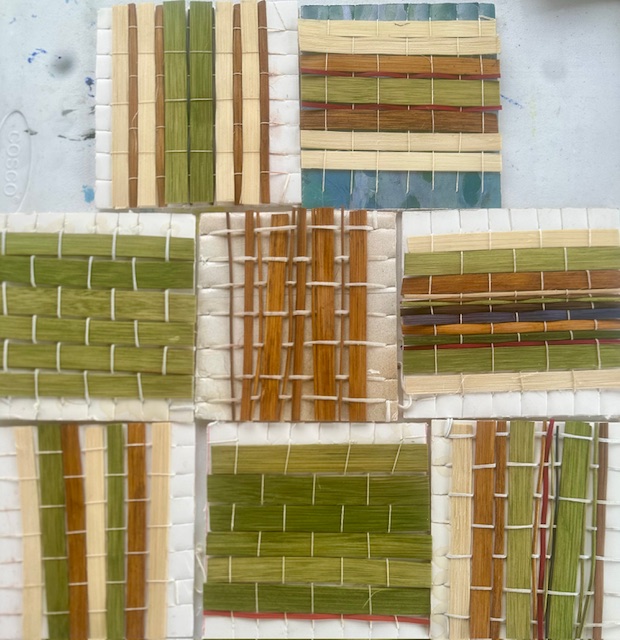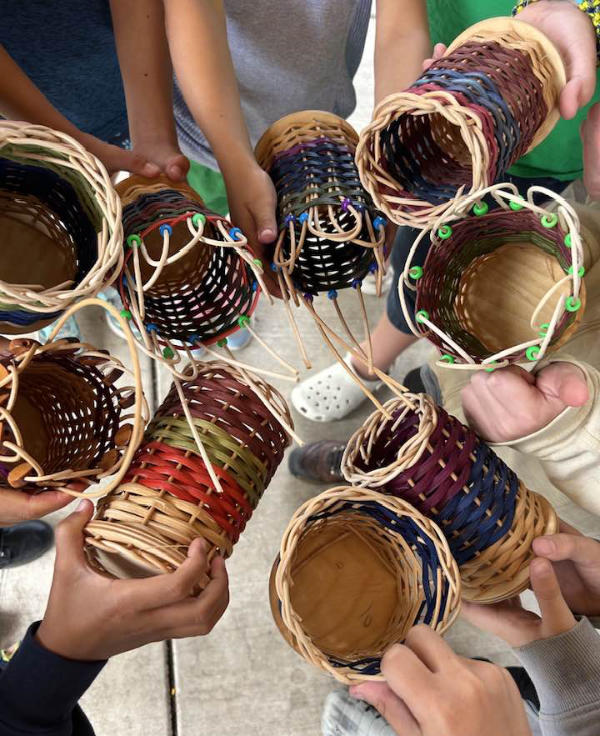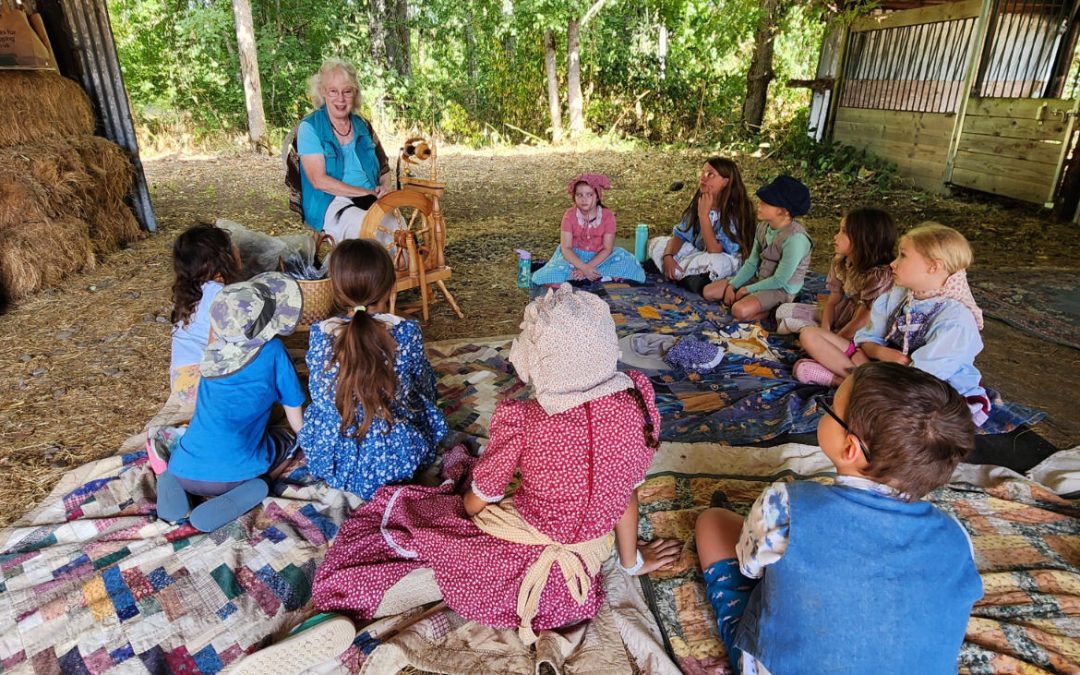This summer held a special treat for me. I participated in each of Singing Creek’s five camps and got to see them from the inside out. So much fun learning going on! When I was a child, I would have thoroughly enjoyed any of these camps, which is why I am so enthusiastic about them for today’s kids.
My spinning friend Elissa and I went to both weeks of the Los Pueblos camps on Fiber Arts day. Each camper got a packet with a hook and some wool, and we showed them how to make a bit of yarn themselves. Spinning yarn is just twisting the fiber into a long strand and allowing the two ends to twirl together.
Elissa demonstrated her drop-spindle ~ it is much more portable than a spinning wheel. We showed the children how to use hand carders in teams of two. They combed the raw fibers into alignment and rolled it off the brush into a rolag,* ready for spinning.
*A rolag is a puffy, gently rolled-up tube of hand-carded wool that is used for spinning yarn. Rolags are made by hand, one by one, by using wool fiber and hand carders.

Spinning is a complex endeavor that takes time, patience, and practice, so we do not allow the children to use our finely-balanced wheels. Instead, we took the rolag that each one created and spun it into yarn for them. Some happily wore it as a necklace, others “finger-knitted” it.
I did a similar spinning demonstration for the Pioneer Homesteading Camp and for the Opal Whiteley Nature Fairies Camp. A few of the children were at both camps and they helped the others to learn the new skill of hand-carding. This brief overview to fiber is simply a fun way to introduce the youngsters to the wide world of fiber arts.
At Earth Ways camp, I assisted some of the children as they learned to make their own baskets out of natural fibers. The teacher shared some of the history of basketry among Oregon’s indigenous peoples and passed around samples for tactile exploration. (We all learn so much better when we involve multiple senses!)
First, they each practiced weaving on a square of foam board that had been warped with twine. Over, under on the first row; under, over on the next one, to get the rhythm of the pattern. Then each camper was given a wooden base set up with spokes that would become the sides of their baskets. They soon discovered that short-cuts of weaving the reeds through multiple long spokes at once actually took longer than patiently going in and out one at a time. Beads could be added to the rim, and there was a choice of finished edging. Personal selections of color and style made for a variety of outcomes, all from the same basic materials.

Time spent in each of the Singing Creek camps brought me a new appreciation of all that we offer the children and families of our community. Yes, there are the expected crafts and games and hands-on learning opportunities. But also the subtext of respect, encouragement, recognition, problem-solving, resilience, critical thinking, teamwork, and self-esteem are all laced throughout these programs. Children of differing ages, backgrounds and skill levels collaborate in the fun. One camp produced a play that they performed on the last day. Another ground wheat for pancakes that they ate with homemade butter and jam. Well-made memories, anchored with concepts that will carry forth into their futures.
Ann Dockendorf
SCEC Board President
Summer 2025


